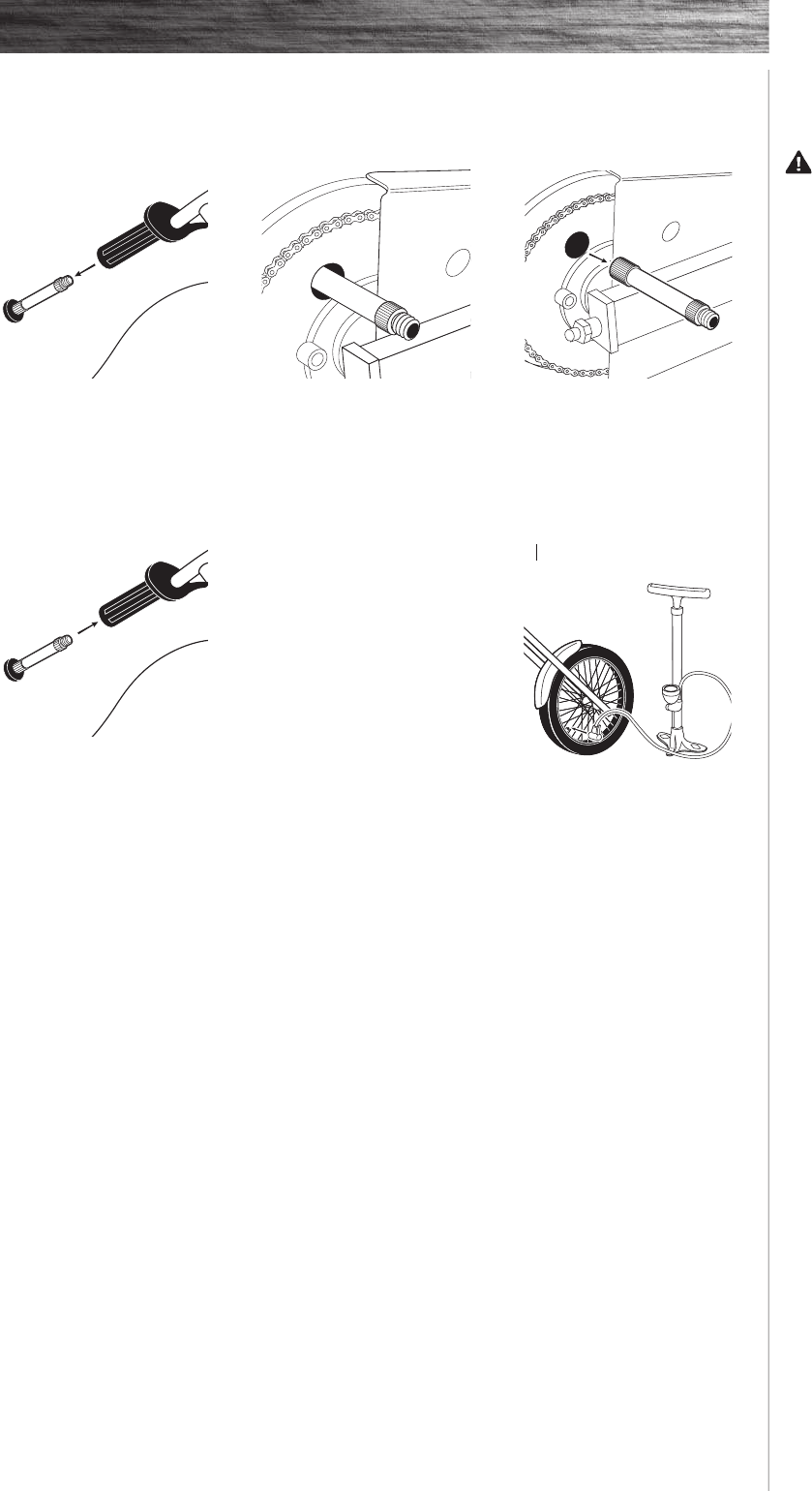
5
REPAIR AND MAINTENANCE
Chain and Sprocket Adjustment –
Mini Chopper
Note
:
Late model Mini
Electric
Choppers and Rebellion Electric Choppers are equipped with a chain
tensioner, are self adjusting and will not use this method to
adjust the chain.
The chain will typically have a “loose spot” and “tight spot” corresponding with a particular sprocket
rotational position.
This is normal and common to all chain-driven vehicles due to run-out tolerances of
freewheel and sprocket.
The chain should be adjusted to the ideal tension with chain in the tightest spot.
Proper chain alignment must be maintained.
The wheel must not be skewed. If the chain is noisy or rough running, check the lubrication, tension and
alignment of the sprockets, in that order.
If the wheel is skewed, follow steps on page 6 to align the wheel and adjust the chain.
1
Use the special valve
extender/adapter supplied. This
item is concealed in the grip on
the speed control side of the
handlebar.
2
Align the access hole in
the drive sprocket with the
tire valve. Thread the adapter
completely onto the valve and
attach the pump. Infl ate to
the PSI indicated on the tire
sidewall.
3
Remove valve adapter
immediately after infl ating.
Infl ating the Tires
Tires are infl ated when shipped, but they invariably lose some pressure between the point of
manufacturing and your purchase.
Rear Tire
4
Place the adapter back into
the handlebar grip for later use.
1
Using a bicycle style tire
pump equipped for a Schrader-
type valve, infl ate the front tire
to the PSI indicated on the
sidewall of the tire.
F
ront Tire
Front TireF
WARNING:
Failure
to remove the valve adapter
after infl ating will cause the
inner tube and/or adapter to
be severed by the rear drive
sprocket.
Note
:
If you lose the adapter,
a valve stem extender can be
purchased at almost any auto
parts store.
Note:
The pressurized air
supplies found at gasoline
stations are designed to infl ate
high-volume automobile tires.
If you decide to use such an air
supply to infl ate your electric
chopper tires, fi rst make sure
the pressure gauge is working,
then use very short bursts to
infl ate to the correct PSI. If
you inadvertently over-infl ate
the tire, release the excess
pressure immediately.


















